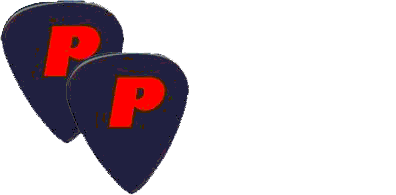Doctor Watson’s Workshop
For someone who has made his living off a guitar style he invented, Doc Watson has been extremely generous in showing it to others. For the first few years he stayed with me, which was whenever he came to LA, he allowed me to tape him in informal pickin’ sessions where anyone I wanted could show up, gape and learn (as long as I wanted them there). These jams might have been in my little Hollywood bungalow, the Ash Grove, or at guitar-maker Roy Noble’s house in the San Fernando Valley. Those were our main Doc Watson “workshop” venues at the time.
You can hear Doc patiently explaining and demonstrating a lick I couldn’t get without seeing it played. After all, the guitar is a visual as well as aural instrument, as opposed to, say, the clarinet or violin. Here, what seems to be a minor point about the D Chord actually showed me where on the guitar neck he was playing it. The rhythm lick at the end of the clip was his way of telling me not to play open-string chords, like in bluegrass, when I backed him up, because they would clash with his solo work. Instead, I should be playing “clutch” chords, like guitarists do in Country/Western bands.
You may not appreciate how open-handed these gestures were, considering they were made at a time when competition between guitarists was at its height in the folk/blues/country music worlds. To get an idea of what that rivalry was like, see my blog entry entitled High and Inside, an accounting of a similar situation with a young Mac Rabbenac, later known as Doctor John. It reads a lot differently than this one.
But to get back to Doc, some of these impromptu workshops were held when Merle, his son, was still alive. If you listen carefully you can hear Doc being a little sterner with Merle than he was with me. Well, duh, it was his son.
But Merle wasn’t quite old or experienced enough to be able reliably to back up Doc on stage. That was my job, and one of the most thrilling in my life. Decades later Doc told me that he’d thought of the two of us as an impromptu duo, and that I had held up my side of the partnership as well as anyone else he’d ever played with. At the time, however, I thought I was hardly cutting it and that Doc’s workshopping with me was as much about teaching me how to back him up as entertain me and my friends.
It’s kind of eerie to hear my sincere, naïve voice 45 years ago asking Doc to repeat something or critique whatever it was that I was struggling with. You can hear the patience in his voice, and, it seems to me as I listen back to the tapes today, a kind of contagious confidence he seemed to have in my ability to learn.
I speak to Doc fairly frequently these days, and to my constant surprise he remembers so many things about our times together doing music, sightseeing (he could “see” more with his hands than you can imagine, q.v. Doc in Travel town) or eating, q.v. The Doc Watson, a sandwich made especially for him by the countermen at Cantors, the ranking Jewish delicatessen in L.A. in the mid-‘Sixties (it still is).
Anyway, the last time we talked I asked him how he would feel if I put excerpts of some of those workshops in my blog. He told me to go ahead and use anything I wanted to. Dudes! Show me another working musician who would say that, and I’ll show you someone whose licks aren’t the strings they’re played on.
One-liner Notes:
“My mother was scared by Chet Atkins while she was still carrying me.” Merle Travis, during a spectacularly fast finger- picking instrumental at the Ash Grove, ca. 1965.

